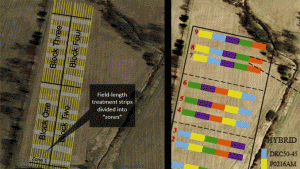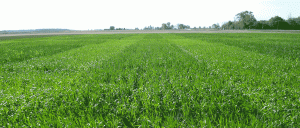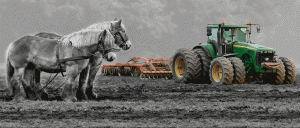4R progress report
MEASURING PROGRAM SUCCESS

IN MID-MAY, Fertilizer Canada released the first-ever 4R Nutrient Stewardship Sustainability Report outlining what is being done by Canadian growers to adopt sustainable farming practices.
“Sustainability has always been an integral part of our activities and initiatives at Fertilizer Canada,” says president and CEO Garth Whyte. “We’re driven to get sustainability right by supporting Canada’s development goals and promoting the adoption and implementation of innovative fertilizer management practices like 4R Nutrient Stewardship.”
The release of the report, Getting 4R Sustainability Right, represents a step forward towards documenting concrete sustainability goals in a quantifiable and verifiable manner, as they relate to the 4R nutrient stewardship principles of right source, right rate, right time, and right place.
“4R really is the 30-year overnight success story,” says a laughing Whyte. “Really, it’s something that many farmers and advisors have been doing voluntarily for years but the difference is now the measurement metrics are being put in place.”
The report measures sustainability in three key areas: environmental impact, social impact, and economic impact.
ENVIRONMENTAL IMPACT: CLEANING UP LAKE ERIE
As the report points out, using too much fertilizer or not using it properly can pose significant threats to the environment. But combining a 4R Nutrient Stewardship framework with smart agricultural practices can go a long way to reducing threats to the environment.
Case in point: to help reduce nutrient runoff and leaching into freshwater from fertilizer application, in February 2014, the Great Lakes Commission’s Joint Action Plan endorsed the 4R Nutrient Stewardship framework. In the same year, the International Joint Commission recommended the use of 4R best management practices to protect the Lake Erie watershed from phosphorus runoff and harmful algae blooms.
And, in 2015, Fertilizer Canada signed a Memorandum of Cooperation with the Ontario government and the Ontario Agri Business Association to match the province’s environmental action and agricultural sustainability objectives with the better use of fertilizer.
“Agriculture, on both sides of the border, has been identified as being part of the solution to improving the water quality of Lake Erie,” says Debra Conlon, manager, Government Relations with Grain Farmers of Ontario.
Conlon says, for the most part, Ontario farmers are already doing a good job managing their phosphorus. So, implementing 4R as it applies to improving Lake Erie is more about incremental changes rather than sweeping changes.
“It’s not like anyone is telling farmers they need to cut their phosphorus use by half or anything like that,” says Conlon, explaining that it’s more about the little changes of applying 4R best management practices that help towards improving the water quality of Lake Erie. “Agriculture is only one part, but it’s an important part of the bigger solution to help clean up Lake Erie. So, it’s really important for us—the farmers—to do this.”
And, farmers appear to be listening. According to the report, approximately 2.4 million acres are now being captured under the program—double the number of acres from 2015.
Fertilizer Canada has a goal of securing a total of 20 million 4R designated acres of Canadian crop production by 2020.
SOCIAL IMPACT: EDUCATION IS THE KEY
One area Fertilizer Canada and its partners, including Grain Farmers of Ontario, are promoting heavily is the 4R Nutrient Management Specialty Certification for Certified Crop Advisors (CCAs). Developed in collaboration with the Ontario Certified Crop Advisor Board, this 4R certification ensure CCAs who work in nutrient management planning learn how to acquire reliable resources and assist farmers in making on-farm decisions about 4R Nutrient Stewardship.
To date, 89 Ontario CCAs have been certified.
“4R really is a good news story and we’ve really been trying to promote it and the certification component,” says Michael Buttenham, sustainability and environment coordinator with Grain Farmers of Ontario.
Fertilizer Canada also launched a national 4R Designation Program for other industry stakeholders like agri-food professionals, farmers, agri-retailers, and crop advisors to teach them how to adopt and promote sustainable nutrient management practices. Since the national launch of the designation program in 2015, the report lists 11 retail organizations and 16 non-retail organizations that have been trained in 4R Nutrient Stewardship to become 4R designated.
The report says that represents 1,960 growers and other stakeholders who have been educated on 4R Nutrient Stewardship.
In the March 2017 issue of Ontario Grain Farmer magazine, Buttenham wrote an article titled A Sustainable Nutrient Plan: Applying the principles of 4R in which he talked about various 4R practices growers could implement on the farm, including record keeping, soil sampling, and calibrating your equipment to ensure the appropriate application rate. He encourages farmers to educate themselves with the 4R framework, and to use their agri-retailer and CCA as a resource.
ECONOMIC IMPACT: HELPING GROWERS THRIVE
Fertilizer Canada says there are many financial incentives to adopt nutrient management practices like 4R Nutrient Stewardship: higher average crop values, more efficient use of fertilizer, and other crop nutrients, and new market opportunities coming from consumer demand for information on how food is grown.
The report gives the example of 4R demonstration farms that were set up in Prince Edward Island to help potato farmers achieve greater economic and environmental sustainability. It says that although there were variations from farm to farm, three years of results showed that implementing the 4R Nutrient Stewardship best management practices could lead to an increased crop value of between $80 and $200 per acre, a 10-to-30 per cent less drop in phosphorus pentoxide use, and lower nitrate and phosphorus residual levels when compared to the standard practice plots.
None of it comes as any surprise for Whyte. As he says, “We know 4R works.” •


























